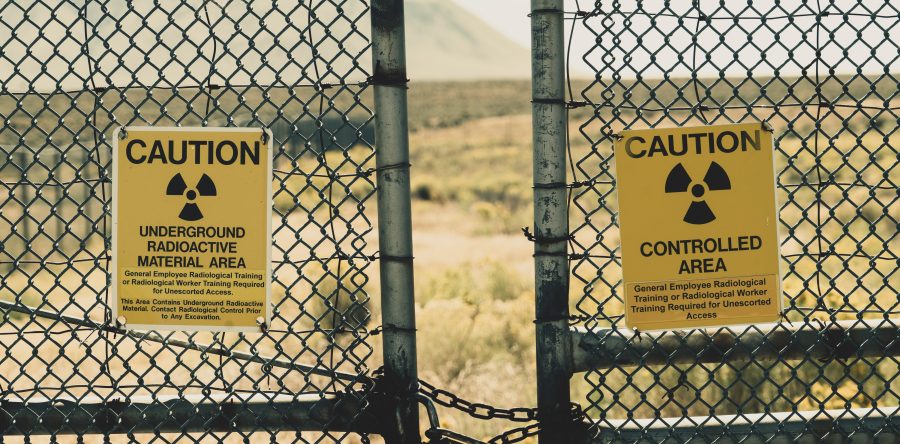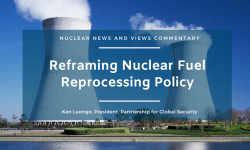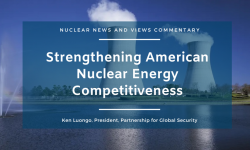New developments in the Middle East are raising concerns about whether the region will become the world’s next nuclear hot spot. While the escalating situation stokes international anxiety, it has not stimulated an effective, comprehensive nuclear security policy response.
The reality is that multiple nuclear facilities will be operating in several countries in the region inside of two decades. The challenges are potential nuclear weapons proliferation, the security of operating power plants, and the battle for geopolitical influence that results from nuclear exports.
The most glaring recent worry is the statement by Turkey’s President, Recep Tayyip Erdogan, that he cannot accept continued restrictions on his country’s development of nuclear weapons. Erdogan’s complaint about nuclear restraint may be bluster, but Turkey is loosening its ties with its NATO allies, despite the fact that roughly 50 U.S. nuclear weapons are stationed at the Incirlik Air Base and that the security of these weapons is a concern.
In its turn away from its NATO allies, Turkey increasingly is siding with Russia in both foreign policy objectives and nuclear development. Russia is building the Akkuyu nuclear power plant on the Mediterranean coast of Turkey.
Other regional powers including the United Arab Emirates, Iran, and Egypt are operating or building new nuclear power plants, the latter two with Russian support. Iran also is raising weapons proliferation tensions by increasingly stepping back from the restrictions of the 2015 nuclear deal from which the U.S. has withdrawn.
Saudi Arabia, in part responding to Iran’s nuclear advances, is pursuing a slow-moving tender for the construction of two new nuclear power plants. A gnawing question is whether the Saudi’s will try to use the program as a cover to go nuclear. This concern has fueled a simmering dispute between the Kingdom and the U.S. over the non-proliferation terms of the agreement that is legally required for U.S. companies to provide the Saudis’ with major nuclear reactor components and assistance.
The situation is further complicated because South Korea, the UAE’s nuclear supplier and a contender for the Saudi reactors, may be prevented from reaching a deal as U.S. technology used in their current reactors requires a U.S.-Saudi nuclear cooperation agreement. The Koreans are claiming independence from U.S. technology in their most recent reactor design, but this has created a dispute with the U.S., which rejects the claim. This fight has weakened a civil nuclear alliance between the two key countries that neither can afford and that may allow Russia or China to establish yet another nuclear beachhead in the Persian Gulf.
A new worry was created by the recent precision guided missile attack on Saudi Arabia’s Abqaia oil facility and the inability of defenses to detect or defeat it. This could threaten existing and proposed nuclear facilities in the region and the weapons could potentially be launched by non-state actors raising terrorism risks. But, emerging disruptive weapons technologies like high speed, precision drones are a threat to any large, static critical infrastructure, and the challenge is in how to respond to, or deter, these attacks to which all nations are vulnerable.
It now is inevitable that several Middle Eastern nations will have nuclear power capabilities in the next two decades. But this reality does not seem to have resulted in a coherent nuclear security strategy for the region. Instead, policy making in individual issue silos persists.
There are several policies that should be considered in concert.
The U.S. needs to strengthen its position as a civil nuclear supplier in the Middle East. Achieving this alone will be difficult for a number of reasons. It can work most effectively by rapidly identifying a mutual accommodation with South Korea that allows both nations to operate as a nuclear supply team promoting high standards in the region.
The fuel cycle policy for the region’s new reactors needs to be more coherent and realistic. Restricting nations from reserving the right to enrich uranium for reactor fuel may prove to be a pyrrhic victory if Iran solely retains the capability or it hands control to Moscow or Beijing who have ulterior geopolitical motives. There are approaches to enrichment and reprocessing that can keep the technology at bay in the region without explicitly banning it. But that will require deftness and compromise and there’s undeniably risk associated with this approach if the oversight is not stringent.
The U.S. and its allies need to get much more serious about moving next generation advanced reactors into the deployment pipeline. The Middle East is a candidate area for these reactors which can address growing water scarcity concerns and provide distributed electricity to a growing population, potentially with lower proliferation and security risks.
The system of global nuclear security needs to be significantly improved. Emerging disruptive technologies like precision guided munitions, swarming drones, and cyberattacks need to be addressed as part of an overall critical infrastructure protection process, but their challenges affect all nuclear operating nations and require additional attention and more effective responses. When the IAEA convenes a special meeting on nuclear security early next year, policy responses to emerging threats need to be a priority.
Ken Luongo, President, Partnership for Global Security





